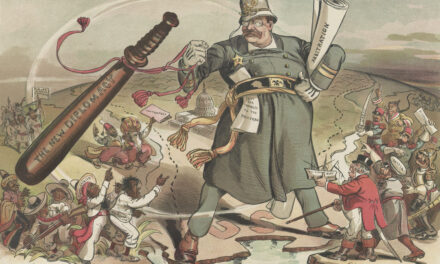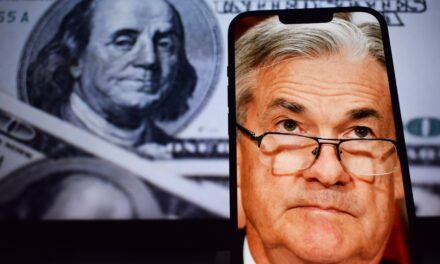Happy Halloween and welcome to Moneyball Economics!
It’s peak Spooky Season right now … but as far as markets are concerned, things couldn’t be any less scary. That’s thanks to strong economic data and impressive stock performance so far in 2025.
So today, I thought I’d share a comprehensive recap of where we’re at after the first 9 whirlwind months of the Trump administration — and where the global economy will be headed into 2026.
Click the video below to dive in:
Video transcript:
Hello fellow Moneyball economists, Andrew Zatlin here, and Halloween has arrived.
This year, it’s going to be all treats … no tricks.
Let’s talk about the state of the economy, how it’s doing so well and where it’s going to go from here. And the reason we care about the economy is quite frankly, wherever the economy goes, that’s where the stock market’s going to go.
More economic activity translates into more business activity. That means higher revenues and that means higher profits and that means higher stock prices. But as we saw earlier in the year, it can also work the other way.
We have seen the stock market go up, go down and go right back up. In fact, it’s currently year to date up 15%. And guess what? That’s exactly what I predicted it would be when I sat here in January saying, you want to be long and strong this market with Trump in charge. In fact, 15% we could land at 20% and next year could be just as strong.
Now, the reason I was strong is again, because I see Trump as a driver of the economy, as someone who wants to boost the economy and as someone who knows how to do that, and that’s pretty much what we’ve seen all year. But it wasn’t always that way, was it?
When Trump tried out his tariffs in March and April, it was panic for the stock market. It collapsed. And there was reason for that because when you think of this academically, we, the United States depend on imports.
70% of our economy is consumer driven and we import a lot of consumer goods. We import a lot of raw materials. And quite frankly, if you’re going to raise the price, double it in some threats under Trump, well, you’ve raised costs on the consumer, so that becomes inflationary and it slows the economy down.
So not good prescription for the economy.
And that translates into problems for companies and their activity. Boom, stocks are overvalued. But what happened next was we quickly saw a few things. First of all, Trump got a little bit less bluff and bluster lowered the temperature on what the tariffs really were going to look like, even kicked the can a little bit on China.
But then we also saw something very important. We saw our trading partners absorb a lot of the cost of the tariffs. At the same time we saw that the cost of the tariffs was getting diluted. We import a lot of raw materials, a lot of finished goods, but by the time it hits the consumers, that’s actually a fraction of all of the costs that go into selling the product on the shelves.
Bottom line, we didn’t see the inflation that everybody was concerned with.
Yes, we saw a little bit, but now we’re arguing over whether inflation’s 3%, 3.1%. And when you look backwards under Biden, it was ridiculously high 6%. So the conditions, the economic conditions have definitely improved and Wall Street notices that, and that’s why the stock market’s up.
But that’s not the end of all the positive things we want to look at when we talk about the American economy.
We from a jobs perspective are definitely in a no firing, no hiring situation, but that’s not that bad. Again, we are a consumer economy. As long as consumers are spending, as long as wages are funneling through the system, we keep growing.
Businesses keep growing, and that’s what we’ve seen. So firing has pretty much ended very benign labor conditions. Hiring is starting to pick up because companies over fired. So we’re ending the year with a lot of stability.
The tariffs … we’ve navigated that. The climate of layoffs … we’ve navigated that. And by the way, those layoffs were going to happen whether it was Trump or Harris, because as we’re still seeing with Amazon, a lot of companies overhired during COVID, they just didn’t know when or how they should fire them. That’s what Trump is doing at the federal government level.
For example, Trump’s trying to return the federal labor force back to 2019 levels and it means firing about 300,000 government workers. He is making that happen, Amazon’s making that happen. But there are other things going on under the surface that are driving our economy forward. One of them is ai. AI is a massive capital spending adventure.
And guess what? There will be losers along the way, but I live through the dotcom bubble. So yes, a lot of capital gets spent hundreds of billions of dollars and some of it does get wasted.
But if you look at today’s economy, it is 100% driven by what happened in the dotcom bust. And what happened, quite frankly, was very basic. Everybody wanted internet and Cisco. I was there. We built these massive fiber optic infrastructure layers. The problem was demand wasn’t there. And so these fiber optics were unused and the reference was dark fiber because it went dark.
And along come companies and start to realize that because nobody’s using the fiber optics, the costs are pretty low to send a packet of information. Nobody’s using it. And so Netflix comes along and says, Hey, I’m sending out DVDs in the mail. I could probably do movies over fiber optic cable that nobody’s using. Boom, they’re not the only ones. Netflix comes out of that. So do all these other FAANG companies.
You’ve got Zoom, all these new technologies. I can now talk to you cheaply over the internet. I can meet with a doctor. We have telehealth.
In other words, everything we know today, the way the economy moves, rests on overinvestment in the dotcom boom. Just as going forward, we’re going to have a massively stronger economy, new services, new products that are going to basically emerge Phoenix like from the ashes of over-investing in AI, but we’re not at peak AI investing yet. Instead, we’re seeing hundreds of billions of dollars come in.
We need nuclear power plants to power up all these data centers. Okay? A lot of spending action is underway. A lot of economic activity translates into a lot of business activity. Stock market’s just going to go up from here, but it’s also moving the economy forward. And that’s just one example of spending big pharma. There are commitments of over $200 billion from big pharma to start manufacturing here and on and on and on.
If you add it up, we’re looking at over a trillion dollars of committed investing underway now thanks to Trump’s business aggressive administration, but that’s not the end. It’s just the beginning. Remember, we’re only nine months not even into this guy’s tenure. He’s got three more years and he’s very focused on driving the economy forward and he’s achieving a lot of his objectives.
Let’s talk about other things that are favorable to the economy, why the economic conditions continue to be positive. One is no labor strikes. In the past couple of years, we’ve had massive strikes at gm, tens of thousands of workers sitting down port strikes this year. We’ve had one strike at a big company, Boeing, 3000 people sat down. Strikes are not happening. There are no economic disruptions to point to. Meanwhile, speaking of economic disruptions, we haven’t had hurricanes This year has been a totally benign condition when it comes to weather.
Again, that keeps the economy up and running.
Lastly, interest rates. Let’s talk about what’s going on with interest rates. Over the past six weeks, we have gotten a lot of treats from the Federal Reserve. We’ve had interest rates shaved by 50 basis points, 0.5%. That’s highly stimulative. The markets didn’t really react overwhelmingly this week when we got another quarter point, and that’s because quite frankly, it was baked in.
Everybody assumed it was going to happen because quite frankly, inflation, it’s moderating. Labor market’s soft. I mean we’re not seeing a lot of hiring. And those are the two things that the fed’s supposed to track. If inflation’s mellow and the labor market’s soft, you’re supposed to cut rates and we don’t see any signs of those conditions changing. And so boom, the assumption was a rate cut this week. And as I mentioned previously, that was never the question.
The real question for the markets is what comes next? Will there be another rate cut this year and will there be another one next year?
Quite frankly, I think Jerome Powell this week when he gave the rate cut, he talked about this and I think he did a good job. He said, I can’t predict if there’s going to be another rate cut. I don’t have any data. It’s been a month of no data. I don’t know what’s really going on in this economy.
I can’t point to inflation or jobs because I don’t have the data. Get the data, then we can move forward. And that’s a problem for investors because that means there’s, the data’s really not flowing. It probably won’t flow until mid-November, which means really no action until December maybe.
And quite frankly, if you’re the Fed and you’re looking forward, you see all these magnificent moves by Trump that are driving up the economy, it kind of feels like maybe you should be more cautious.
It kind of feels like a lot of the fiscal policy that Trump is trotting out will actually lead to inflation. And if we get that strong economy that Trump is promising, it kind of will tend to be inflationary. Everything rests on the price of oil staying low to keep it from being inflationary.
But this week, Trump is returning from his visits to Asia. He’s bringing back the spoils of a trade war with China, and we know what that means. That means a lot more business activity next year. Bottom line, we have a public sector that is geared to being lean and mean and pro-business. The conditions today are pro-business. We have interest rate cuts, which are economically stimulative.
At what point do you say I’ve got to be long and strong in the stock market?
Well, that was this time last year. And guess what? You need to double down. This economy is going to grow, come hell or high water, and we have three more years of Trump, which means it’s going to continue to grow. He’s going to continue to pull rabbits out of his hat. And a stronger economy means a rising stock market. I see nothing in the economy to be uncomfortable about. I see only positives.
I see us getting through a soft patch and growth from here we’re it to win it folks. Zatlin out.

Andrew Zatlin
Editor, Moneyball Economics





